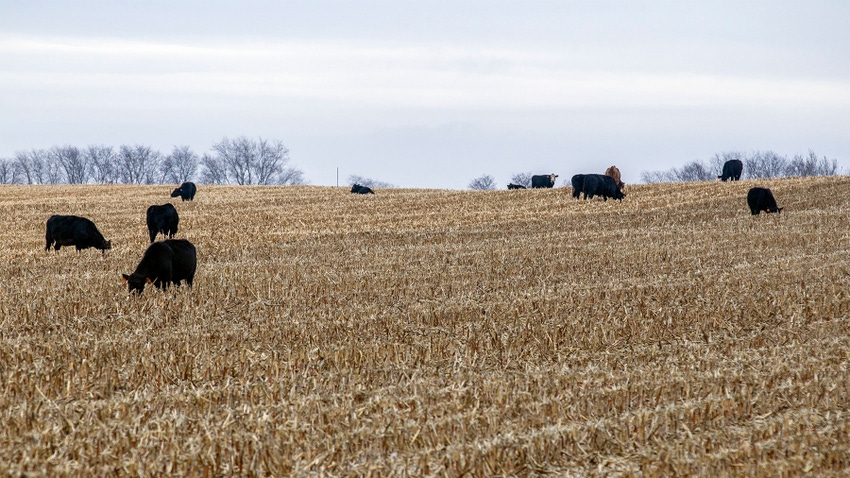October 30, 2023

by Garth Ruff
As we slide into autumn, harvest season is upon us, and it is fairly dry in Ohio’s cow country. Several folks are beginning to feed hay early, which begs a question: Do you have enough hay? If not, what are your plans for winter feed?
Unlike most years, the hay season across the southern two-thirds of Ohio was relatively timely. A large percentage of first-cutting hay was made three to six weeks ahead of a “normal” schedule.
While first-cutting hay quality is better on average than the past few years, tonnage was reduced. Second and third cuttings of mixed grass hay were also fairly timely as the weather pattern turned dry in mid-August.
Being short on hay for the winter isn’t a make-or-break decision as there are several options available to feed cattle. They include the following:
Buying hay. The most obvious solution is to buy more hay to make up for any shortages in supply. If you’re looking to buy hay, the time is likely now, as hay prices should continue to rise throughout the late fall and winter months.
When buying any volume of hay, having a forage analysis done should be non-negotiable as not all hay is worth the asking price. Knowing the nutrient content of a lot of hay is the only surefire way to know the value of the forage being purchased.
Upon receiving a forage analysis, important numbers to look for are total digestible nutrients, crude protein and neutral detergent fiber. A hay sample with a TDN value of less than 60 will not provide sufficient energy to a 1,200-pound beef cow. Crude protein can have a great range depending on forage type and cutting.
The value for NDF is an indicator of forage digestibility. The lower the number, the better. Grass with an NDF above 60% is often mature grass with lower digestibility. Visual appraisal and smell are good indicators to evaluate spoilage and weathering more so than forage quality.
I get a couple questions each year about buying individually wrapped bales of baleage. Once again, a forage analysis should be in hand, and knowing whether the forage was baled at the right moisture is key. Properly made baleage is between 45% and 60% moisture.
Supplementing grain. Cereal grains, especially corn, are often more cost-effective sources of energy than forage. As harvest continues and corn futures hover near or below $5 per bushel, corn coupled with some lower-quality, cheaper forage may be an option to help get cattle through the winter months.
Feeding 2-3 pounds of corn per head, per day, to fall calves or gestating cows will stretch short hay supplies.
Grazing corn residue. Stan Smith, OSU Extension program assistant for agriculture and natural resources in Fairfield County, wrote an article in the Ohio Beef Letter on feeding cornstalks. Although baling cornstalks is an option, I would agree with Smith that grazing corn residue is by far the most economical way to utilize them as a feed source.
Consider principles of rotational grazing when doing so, allowing cattle to optimize the available dry matter and to redistribute nutrients more evenly across the crop field.
Back up the truck. Cattle prices remain historically strong. Pencil out purchasing supplemental feed versus culling a few of the lower performers in the herd.
Culling productive females is a tough decision (ask ranchers in the West), especially as the national cow herd continues to contract — leading to an even smaller 2024 calf crop than what we had this year. A short calf supply will lead to continued strength in the cattle market going forward.
Economics and moisture going into winter will dictate what Ohio cattle producers decide to do with regard to overwintering cows. There isn’t a one-size-fits-all answer to making up for feed shortages, but having a plan can save some headaches when the weather turns cold.
Ruff is the OSU Extension beef field specialist. He is also a member of the OSU Extension Beef Team that publishes the weekly Ohio Beef Cattle letter, which can be found at beef.osu.edu.
Read more about:
BeefYou May Also Like




